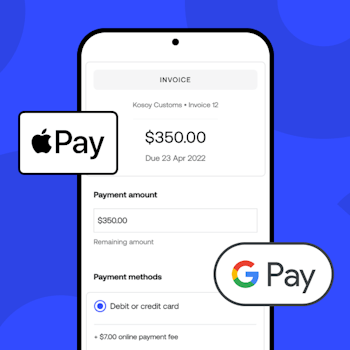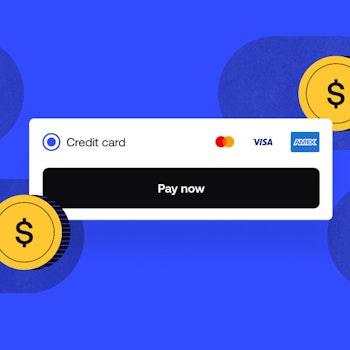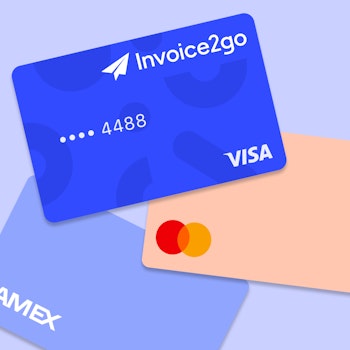
How to start your business plan: a straightforward guide
Is it your dream to start your own business? While it takes firmness of purpose and self-discipline to pull it off, you don’t need to reinvent the wheel to write a solid business plan and start making progress towards your goals.
A business plan serves as your North Star as you navigate the stages of running and growing your business. This plan will get you fired up, hone your focus, make you feel professional – and can increase your chances of success by 30%.
At Invoice2go, a Bill.com company, our mission is to empower entrepreneurs, small business owners, and independent professionals with the tools, tips, and insights they need. Writing a business plan doesn’t have to be daunting. With the help of this guide, you’ll have all the tools you need to write it quickly and effectively.
Why do I need to write a business plan?
Every month, more than 500,000 businesses start in the US alone. However, after just two years, 30% of these companies have already gone out of business. 70% of companies that survive more than five years follow a strategic business plan.
Here are just a few reasons why this plan is so helpful:
To set and define specific goals
A business plan is a written tool that projects 1-5 years into the future and outlines how you intend to make money and grow. It’s a living document – you can update it and make changes as you go – and it doesn’t have to have all the answers.
You want your business to be profitable. But there’s more to it than crafting a logo and saying you’re open for business. Your business plan breaks down big goals into manageable steps. For example, you can make a mini-plan to build your business brand, create a marketing plan, set your pricing, establish revenue goals – and more.
To maintain motivation and create accountability for yourself
Motivation comes in waves. While you may start your business enthusiastically, there will be ups and downs and you may get frustrated. Your business plan serves as a reminder of what you’re working towards and helps you stay on track.
To get outside funding when you need it
Whether you’re applying for a small business grant, a business loan, or looking for people to invest in you, a detailed business plan can help. It shows lenders the steps you plan to take to make your business successful so you can pay back the money they lend you.
To get others excited about doing business with you
Networking, collaborating, and partnering can all help you take your business to the next level. You might benefit from the expertise of other professionals, or you may be willing to trade some control in your enterprise for funding. Your business plan is an essential component in attracting prospective partners to join you.
Pick a business plan format that works best for you
Chances are you’re going to write several versions of your business plan, each in a different format and for a different purpose.
Some people like to deep dive into the details with a long-form, traditional business plan. Others prefer to start with a lean startup plan to solidify their main themes before going into detail. Here are the 2 main ways to write out your plan:
Option A: the traditional business plan format
The traditional format allows you to go into incredible detail about every aspect of your business. You clearly define your goals, identify your consumer base and competitors, show market research, go into specifics about resources, dive into supply chains, and address finance. Here are the key sections to include:
Company description
Who are you and what do you do? What consumer problem does your product or service address, and how do you solve that problem in a novel and compelling way to attract your consumer audience?
Company overview
This section explains the makeup of your company. Who runs your operations and what are the logistics?
Product/service descriptions
What services do you plan to offer both now and as your business grows? What value do your services deliver, and how do they stand out from your competitors?
Market analysis
Do a competitive analysis of your target market and potential competition. Your goal in this section is to show your company has a viable market.
Marketing plan
Spell out your plan of action for marking and sales. Show how you will reach your target audience and convince them to support your brand.
Funding
How much money do you need to launch and sustain your business? What are your overhead costs? The answer can be a guess – but it needs to be an informed one. You want to provide evidence to back up any claims.
Financial projections
This section details your anticipated traction in the market, planned milestones, and projected earnings. Typically, planners map out the first year, although it’s possible to forecast further out. Again, you’ll be guessing here, but with data to back you up.
Often, an appendix is included at the end of a business plan for specific reference details. Also, consider creating an executive summary or loan proposal that is a shortened version of your longer business plan. You can include this at the beginning of your business plan or supply it as a separate document.
Option B: the lean startup format
This version is designed to get you up and running quickly. If your company is small and simple, it may be the best option for you. Remember: you can always switch between formats depending on your needs. This plan includes:
- Your company’s value proposition
- Services
- Primary activities
- Primary resources
- Business channels
- Target customers and customer segments
- Financial needs and cost structure
- Revenue streams and financial projections
This is just a basic (and lean, wink wink) example of what you might include in your plan. Expect to adapt and refine it as you go – it’s not set in stone.
5 useful tips for writing a business plan quickly and easily
Now that you have an outline for what information you need to include, here are some quick tips to make writing out your plan effective and painless. You need to:
- Make it actionable
Put yourself into your reader’s shoes and clearly describe the actions you’re going to take. How will you funnel your expertise, resources, and market research into reaching consumers, building awareness, driving sales, and ultimately ensuring profitability? Think about what you might look for or wonder if someone were to ask you for a loan.
Sure, you want to turn a profit in your first year, but how are you going to make that happen? Write it out.
- Be concise
Your business plan doesn’t need to be long. The U.S. Small Business Administration (SBA) recommends roughly 30-50 pages for a business plan – and this length can be significantly shorter if your business is small and simple. Also, the SBA also suggests that your executive summary or loan proposal is a maximum of 10 pages.
By presenting only the most pertinent information in your business plan, you have the best opportunity to get clarity for yourself to showcase your value to others.
- Keep your language simple
Just because you understand your line of work doesn’t mean everyone does. You need to be aware that industry jargon might go over the heads of your readers. The last thing you want to do is make any proposal hard to understand.
Avoid using technical terms and acronyms as much as possible. Instead, use language that everyone will understand. You don’t have to dumb it down. Just take audience expectations into account and make sure your plan is written inclusively.
- Create a tight pitch
What if someone asked you “what is your business idea?” or “why should I invest?” It’s a good idea to have a simple and compelling answer ready. Deliver essential information about your business goals and methods in a bite-size chunk. Put yourself in the shoes of whomever you might pitch to (a lender, investor, business partner, etc.)—what would you want to know upfront?
Use your pitch to list your business model, consumer needs, industry analysis, basic marketing strategy, main industry competitors, (identified) risks, financial needs and projections, and so on. Do not delve into details during your lean plan. The time for that will come when people show interest.
- Adopt a can-do attitude
Learning how to write a business plan can be intimidating. Luckily there are tons of resources – like this one – to help you. While it may be frustrating to put this information together, remember that countless others have done this before you. If they can do it, you can, too.
Need Help?
Learning how to write a business plan is more manageable with help from experts and those who’ve done it before. You may want to start with free resources, like the SBA and SCORE. These organizations are committed to providing information and assistance to small businesses. You can also seek local aid from your state’s business development center. Also, it may help you to connect with other business owners who have experience writing a business plan and launching a business. Join our Subscriber Success community to connect with others navigating starting and growing their businesses.
Invoice2go is committed to simplifying the lives of small business owners, offering not only valuable information and advice but providing tools that empower you to work smarter – not harder.
Related Articles

How to accept credit card payments on Invoice2go in 3 simple steps

Accept payments online via Apple Pay and Google Pay

Must-not-miss write-offs as you wrap up 2022 year-end finances

5 ways accepting credit and debit card payments helps your business stay resilient

4 easy ways to increase cash flow today

What is Small Business Saturday and why is it important?
The features and surprising benefits of a well-designed packing slip
